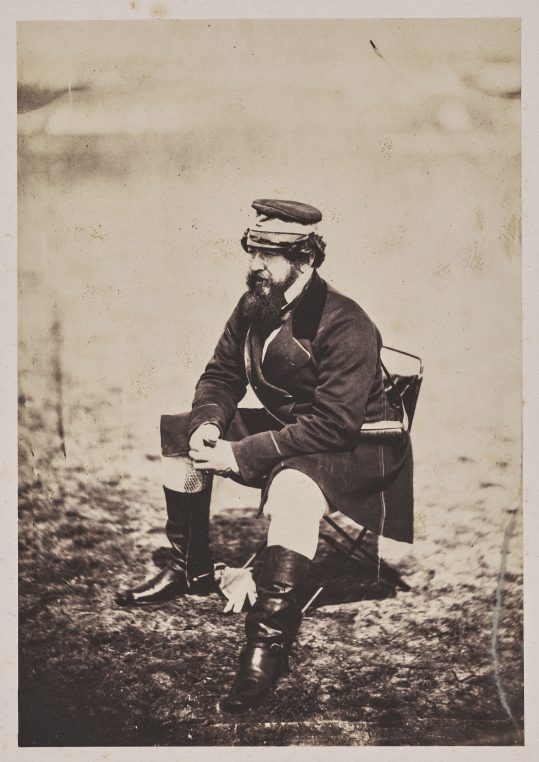
William Howard Russell Esq. the Times Correspondent, Nov 19 th 1855, ©RMN-Grand Palais Domaine de Chantilly-Benoît Touchard
It is quite amazing to think that there were already photo reporters in 1855, fifteen years after the invention of photography in 1839, and this is what the precious Roger Fenton exhibition at Château de Chantilly is teaching us. Fenton (1819-1869) was born in Lancashire and started out as a painter in Paris in Paul Delaroche‘s atelier. He soon became interested in photography after meeting Le Gray, Henri Le Secq and Charles Nègre. In 1850 he becomes the British Museum’s official photographer. At the Great Exhibition of 1851, he perfected his interest for photography and exhibited his pictures a year later in London on Pall Mall. His views of Russia will be acquired by Queen Victoria in 1854, and she then commissioned portraits of the Royal family. She brought twenty of his prints to Napoleon III when she came to Paris on a royal visit of the Universal exhibition of 1855. All photographs shown here, in the pretty drawing galleries, belong to Duc d’Aumale‘s collections of 50 prints bought from Colnaghi. There are 61 more at Musée d’Orsay.
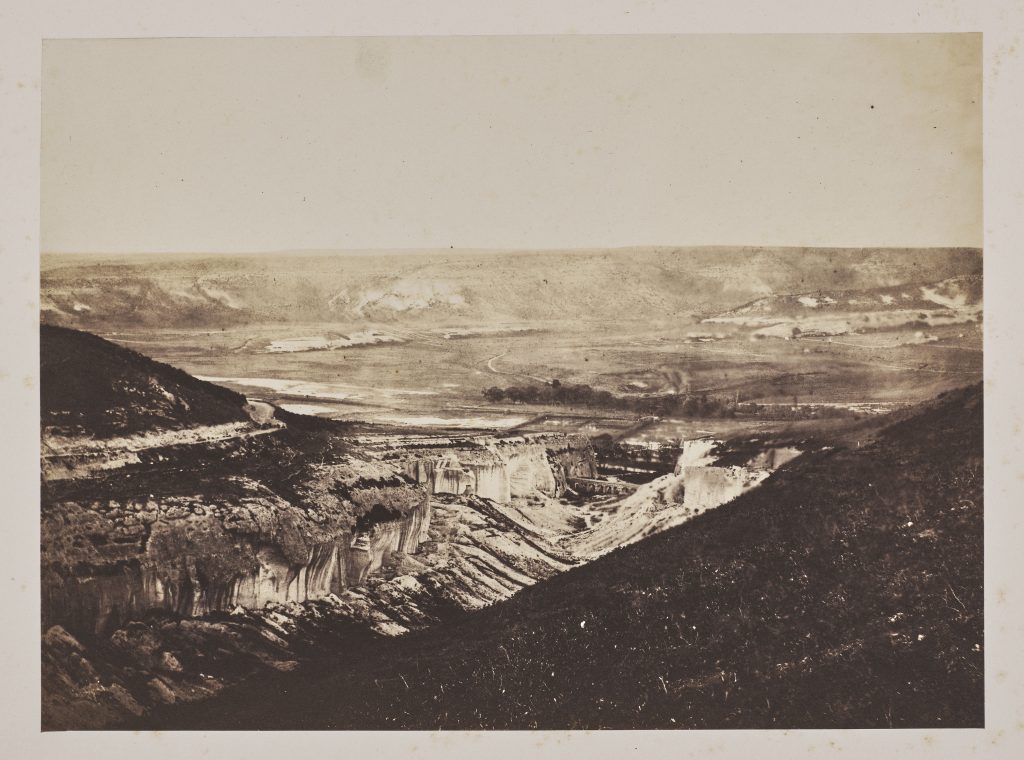
Valley of Inkerman, the stone quarries and the aquaduct were photographed in great precision,©RMN-Grand Palais Domaine de Chantilly-Benoît Touchard
He is subsequently sent by Prince Albert to report on the Crimean war (October 1854-September 1855) in February 1855. While William Howard Russell was writing critically for the Times, he was in charge of sending favorable images which were converted into woodblocks and published in the Illustrated London News. The London print publisher Thomas Agnew & Sons became his commercial sponsor. The resulting photographs may have been intended to offset the general unpopularity of the war among the British people. He set off aboard HMS Hecla in February 1855, through Gibraltar, landed at Balaklava on 8 March and remained there until 22 June. Fenton took Marcus Sparling as his photographic assistant and a servant known as William and a large horse-drawn photographic van full of equipment.
Photographic equipment was very heavy and the chemistry of exposing the pictures, particularly difficult to manage in the outdoor, in a travelling lab. The weather conditions, very hot in summer very cold in winter, are also an obstacle to reporting in real time. The length of the pose does not allow any action and Fenton was limited in his choice of motifs. And no wounded nor dead soldiers are ever photographed. The war is “clean”… There are a number of portraits of the officers (he speaks good French and is very close to Bosquet) and mostly spectacular panoramas of the Inkerman valley. Fenton’s reporting is the most important set of photos of the Crimean war but it is not the first one. Before him, Richard Nicklin had been sent but his ship the Rip Van Winckle was wrecked in November 1854 and he died.

Lord Raglan, Omer Pacha and General Pelissier, 8 June 1855 ©RMN-Grand Palais Domaine de Chantilly-Benoît Touchard
Most French people only know about the Crimean war through street names in Paris: Malakoff, Alma, Inkerman, Sebastopol, Bosquet. The conflict erupted in October 1953 between Czar Nicolas I of Russia and Ottoman Turkey over the Black Sea. Sebastopol is the capital of the Crimean peninsula. Nicolas wanted to reestablish christianism in Constantinople. Queen Victoria and Napoléon III enter the war to defend Turkey. There are 300 000 French soldiers managed by General Canrobert and General Bosquet. The English send only 98 000 led by Lord Raglan. The Turks send 30 000. Crimea had been invaded by the Russians in 1783. On 20 Seprember 1854, the French Zouaves from Africa won the battle of Alma and this is remembered by the sculpture by Diebolt of the Zouave on the Seine which, still today, gives us the level of the water on the river.
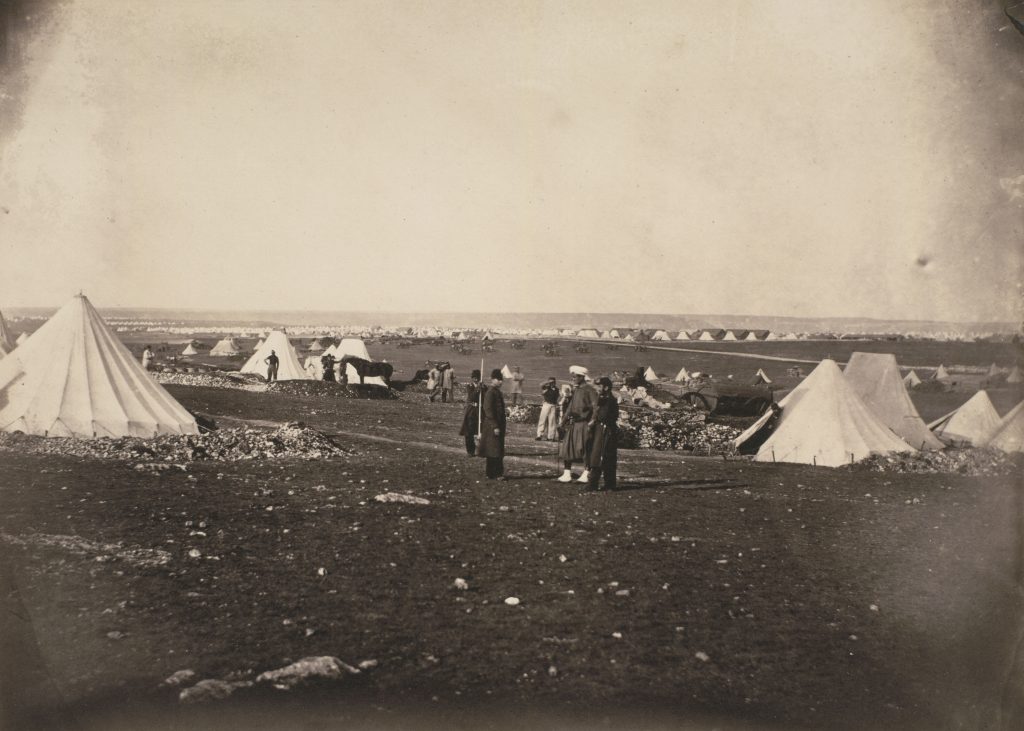
General Bosquet’s quarter’s, with zouaves and soldiers in a desert landscape ©RMN-Grand Palais domaine de Chantilly
On October 25 1854 in Balakava and on November 5, the Russian army is beaten thanks to General Bosquet’s troups and a ten month long siege is installed. The African zouaves arrive dressed in summer clothes, cholera and various other diseases weaken the army: Victor Hugo compares the situation to Napoleon’s troups in 1812. Tolstoï describes the same horror in the Russian troups. The harbor of Sebastopol falls in September and the tower of Malakoff is taken by the zouaves. Alexandre II, the new czar, has to give up and the Black Sea becomes neutral. But 95 000 Frenchmen have died in the conflict most often from diseases. The photographer James Robertson will complete Fenton’s mission and take shots of Sebastopol in ruins. French photographers Colonel Jean Charles Langlois (who was also a painter), Bernard Lassimonne, and Jean-Baptiste-Henri Durand-Brager will also take pictures there.
This is a very special exhibition curated by Nicole Garnier-Pelle who also wrote the catalog published by Faton. It should entice you to go and visit Chantilly once again. The train ride from Gare du Nord is 20 mns and the collections of the castle are superb. Next Year, on the occasion of Paris Photo, Duc d’Aumale will be the photographer exhibited in the same galleries…
Chateau de Chantilly until February 27
Share this Post
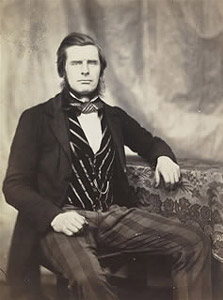

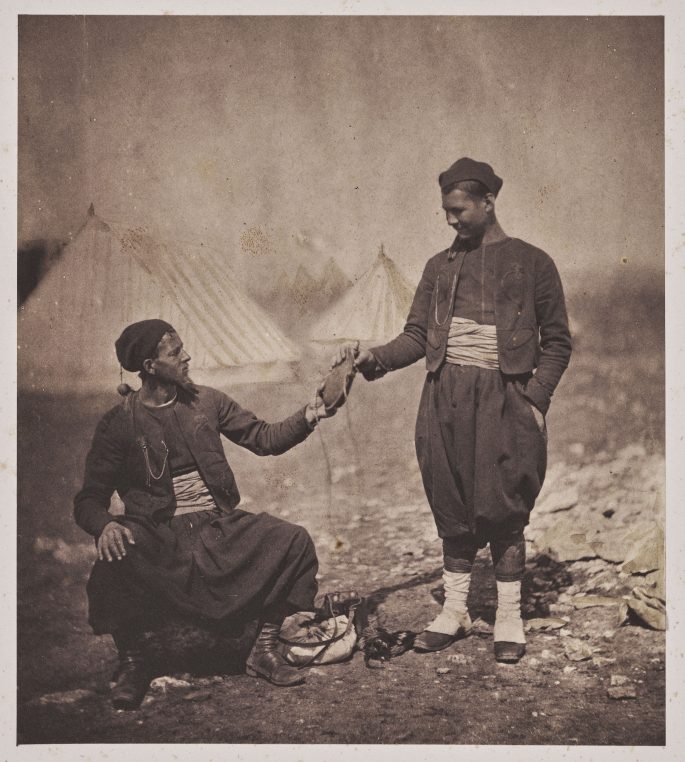
One Comment on “Roger Fenton reports from Crimea, in Chantilly”
Fenton’s still life photographs are the best.